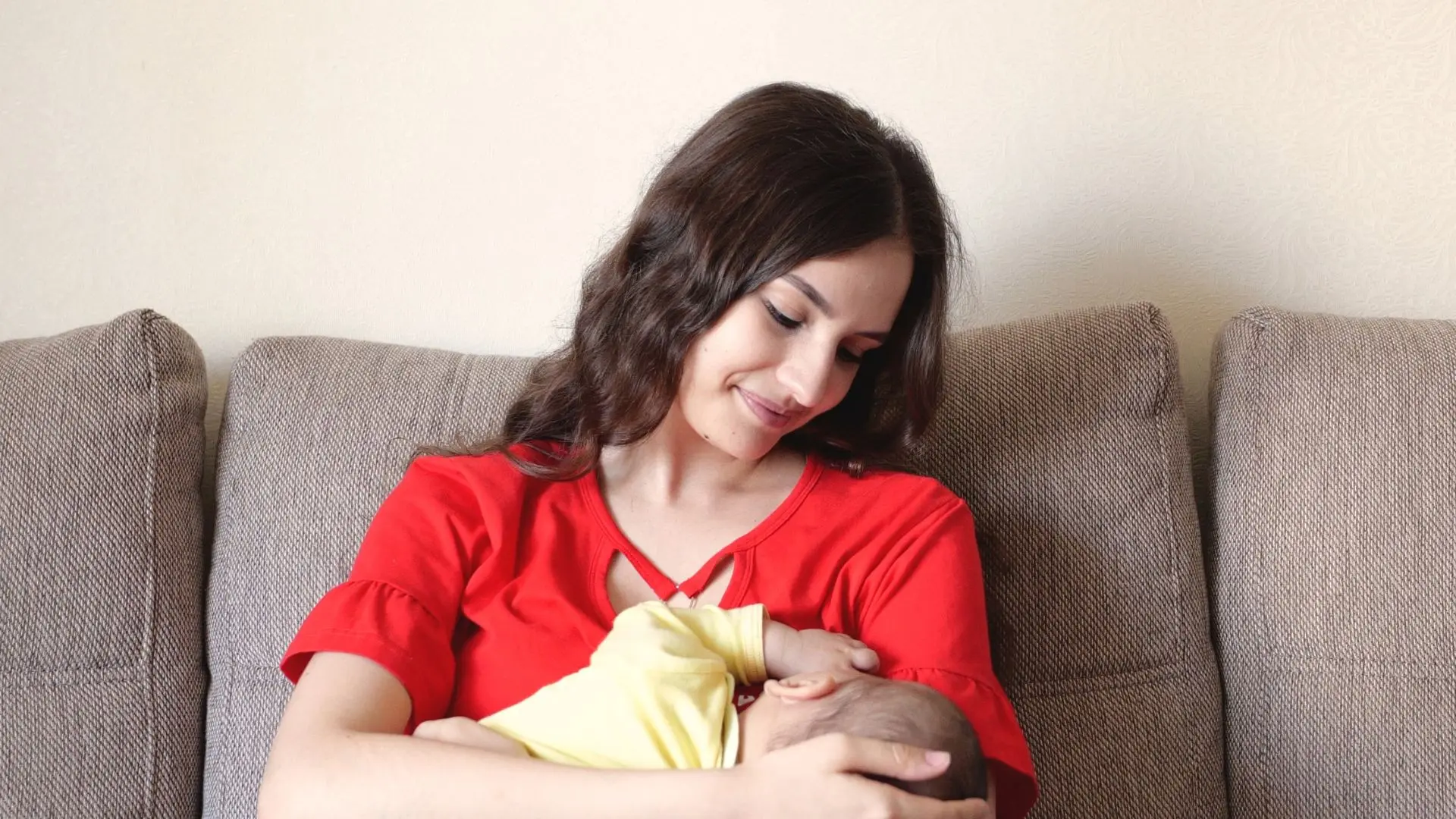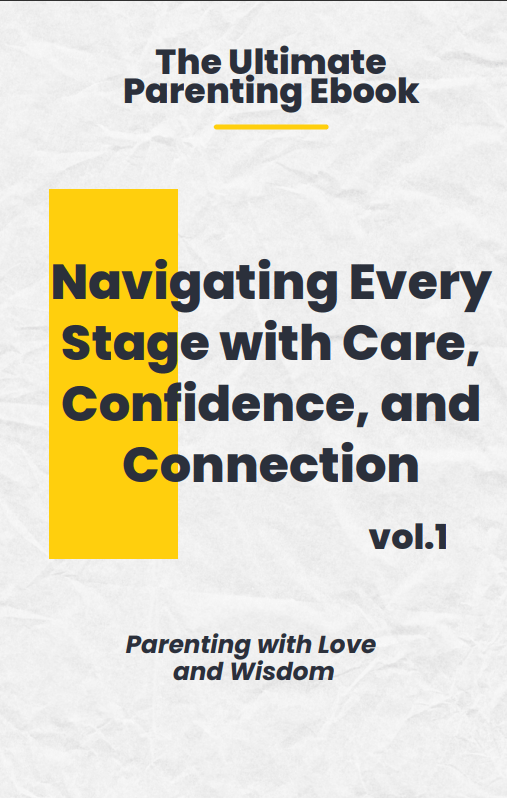Get your baby sleeping better with our “New Mom Tips”. Find practical advice on sleep schedules, routines, and managing regressions in the first year.

Between late-night feedings, soothing cries, and navigating nap schedules, it’s easy to feel overwhelmed—especially when sleep seems elusive for both you and your baby. You’re likely hearing new mom tips from all sides on what works best for getting your little one to sleep through the night, and let’s be honest, it can be a lot to process.
That’s where understanding your baby’s sleep patterns, routines, and milestones comes in handy. Creating a peaceful sleep environment, recognizing sleep regressions, and establishing bedtime rituals can be the key to achieving more restful nights for both of you.
As much as this journey is about your baby’s development, it’s also about making sure you, as a new mom, are getting the rest and support you need. These new mom tips are designed to help you both thrive during this amazing, yet challenging journey.

In This Blog
ToggleNewborn Sleep Patterns (0-2 Months)
The first few months of parenthood are filled with joy, exhaustion, and yes—an almost obsessive focus on sleep. It might surprise you to learn that newborns sleep a lot, up to 18 hours a day, but the key detail is that it’s broken into small chunks, making it feel like you’re constantly awake.
That’s because your baby hasn’t yet developed their circadian rhythm—those internal body clocks that tell us when it’s day and night. For now, your little one is all about survival: eating, sleeping, and pooping.
Key Facts
- Total Sleep: 14-18 hours per day.
- Daytime Sleep: Up to 8 hours, divided into short naps.
- Nighttime Sleep: About 8-10 hours, though broken up by feedings.
Daytime Sleep
Expect lots of naps! Newborns sleep in short bursts because their tiny bellies need frequent refills. Breastfed babies tend to wake up every 2-3 hours, while formula-fed babies might stretch to 3-4 hours.
Your baby may nap for 45 minutes to 2 hours at a time, and this might happen multiple times throughout the day, amounting to up to 8 hours of sleep.
Nighttime Sleep
Newborn nighttime sleep is equally scattered, with frequent wake-ups for feeding. It’s completely normal if your baby’s longest stretch is only a few hours.
The reality is: newborns aren’t yet wired for those dreamy, unbroken 8-hour stretches, but they’re building the foundation.
New Mom Tips for Sleep Success
- Embrace White Noise and Swaddling
The constant background hum of white noise mimics the sound of the womb, making your baby feel safe and soothed. Pair that with swaddling, and you’ve got a magic combination that helps signal to your baby that it’s time for sleep.
- Follow Your Baby’s Cues
Watch for signs of tiredness—rubbing their eyes, yawning, fussiness. Act quickly when you spot them and begin the sleep routine. Timing is everything when it comes to naps!
- Use Motion to Your Advantage
Rocking or gently swinging your baby can work wonders. The motion reminds them of the constant movement they experienced in the womb.
Transitioning to a Sleep Routine (2-4 Months)
Around 2-4 months is when things start to shift a little, and you begin to see some light at the end of the sleepless tunnel. At this point, your baby starts developing a bit more of a routine, and while they’re still waking for feedings, you may notice more predictable stretches of sleep.
Key Facts
- Total Sleep: 12-16 hours per day.
- Daytime Sleep: 4-6 hours across 2-3 naps.
- Nighttime Sleep: 8-10 hours with one or two feedings.
Developing Sleep Patterns
At this stage, you’ll start to notice that your baby is more awake and alert during the day, and hopefully, they’re giving you longer stretches at night. While it’s still too early for rigid schedules, consistency in nap and bedtimes will help encourage better sleep habits.
This is also the age when many babies experience their first “sleep regression“—a temporary disruption in their sleep schedule. It can feel like a setback, but it’s a normal part of their development.
New Mom Tips for Sleep Success
- Wake Your Baby Gently
As tempting as it is to let your baby nap for hours, try not to let naps extend beyond 1.5 to 2 hours. It ensures they get the calories they need during the day so they’re not waking up ravenous at night.
- Introduce a Dream Feed
Gently rouse your baby for one last feeding before you go to bed. This can help stretch out those nighttime sleep sessions.
- Time to Stop Swaddling
Once your baby shows signs of rolling over, it’s time to retire the swaddle for safety reasons. If you’re using a bassinet like SNOO, its built-in swaddle can help keep your baby secure on their back.
Solidifying Sleep Habits (4-8 Months)
If your baby is past the four-month mark, congratulations! You’ve survived the fourth trimester, and you might even have started catching a few extra hours of sleep. However, as your baby grows, new challenges may arise, such as teething and sleep regressions, which can temporarily shake up your sleep routine.
During this period, your baby will likely transition to fewer naps during the day and begin sleeping longer stretches at night. However, each baby is different, so be prepared for variability.
Key Facts
- Total Sleep: 12-16 hours per day.
- Daytime Sleep: 3-5 hours across 2-3 naps.
- Nighttime Sleep: 6-10 hours uninterrupted.
Sleep Regression
One of the most challenging parts of this phase can be sleep regression. Around 6 months, many babies hit a developmental leap, learning new skills like sitting up or even crawling. This excitement often disrupts sleep. Be patient; this is temporary.
New Mom Tips for Sleep Success
- Use White Noise as a Sleep Cue
Even as babies outgrow the need for constant soothing, white noise can become a powerful sleep association. Every time you turn it on, your baby will recognize it as a cue for sleep.
- Be Prepared for Teething
Teething discomfort can often disrupt sleep. Using cold teething toys before bed and keeping white noise on during the night can help soothe some of this discomfort.
- Stick to a Consistent Bedtime Routine
Establish a predictable bedtime routine—such as bath time, a gentle massage, and reading a story—that helps your baby unwind. Consistency is key!
Navigating Sleep Challenges (8-12 Months)
Welcome to another fun stage: your baby is now crawling, pulling themselves up, and maybe even taking their first steps! As they grow more mobile, this can lead to separation anxiety, which often manifests at bedtime. Suddenly, they want more snuggles, more attention, and may resist sleep despite clearly being tired.
Key Facts
- Total Sleep: 12-16 hours per day.
- Daytime Sleep: 2 naps totaling 2-4 hours.
- Nighttime Sleep: 7-10 hours uninterrupted.
Separation Anxiety and Sleep
At this age, separation anxiety becomes a big deal. Your baby is now aware that you’re not always there, and that realization can make them clingy at bedtime. This is also the age where you might experience an 8-month sleep regression, triggered by new developmental milestones like pulling up or babbling more.
New Mom Tips for Sleep Success
- Offer Comforting Objects
Introduce a lovey—a small, soft blanket or toy your baby can keep with them during naps and bedtime. Loveys provide security and comfort during these moments of separation.
- Add Extra Pacifiers
If your baby uses a pacifier, leave a few extras in the crib so they can easily grab one during the night.
- Be Patient
Sleep regressions are tough, but they’re temporary. Stay consistent with your bedtime routine, and eventually, your baby will adjust.
Reaching the First-Year Milestone (12 Months)
Happy first birthday to your little one! You’ve made it through the whirlwind of the first year. Now, you’re likely enjoying more regular sleep, though naps and nighttime wake-ups can still fluctuate.
At this stage, your baby’s sleep is much more predictable, but they might also begin transitioning to fewer naps as they inch toward toddlerhood.
Key Facts
- Total Sleep: 12-16 hours per day.
- Daytime Sleep: Typically 2 naps totaling 2-4 hours.
- Nighttime Sleep: 7-10 hours uninterrupted.
Transitioning to Toddler Sleep
Once your baby turns 1, they may start consolidating naps and dropping down to one nap per day, typically between 12 and 24 months. This change can come with its own set of challenges, but by now, you have the experience and tools to handle it!
New Mom Tips for Sleep Success
- Keep the Bedtime Routine
As your baby grows into toddlerhood, the consistency of their bedtime routine remains crucial to good sleep habits. Keep it predictable and soothing.
- Introduce a Nightlight
A soft nightlight can help ease any fears your baby may develop as they become more aware of their surroundings.
- Be Flexible
Life with a toddler is unpredictable, and some days may not go according to plan. If naps are missed or cut short, offer an earlier bedtime to compensate.
Tips For SIDS Prevention
Sudden Infant Death Syndrome (SIDS) is a deeply concerning issue for new parents, and it’s most likely to occur in the earliest months of your baby’s life. Taking proactive steps to prevent SIDS is critical for ensuring your baby’s safety.
Below are some key preventative measures to keep in mind
- Always place your baby on their back to sleep during naps and at night.
- Use a firm sleep surface, such as a crib mattress covered with a fitted sheet.
- Keep the sleeping area free of soft objects, toys, and loose bedding to avoid suffocation risks.
- Ensure that your baby sleeps in the same room as you for the first six months, but not in the same bed.
- Avoid overheating by dressing your baby in appropriate sleep clothing and maintaining a comfortable room temperature.
- Consider offering a pacifier at naptime and bedtime once breastfeeding is well-established, as it has been linked to a reduced risk of SIDS.
- Avoid exposure to smoke, alcohol, and illicit drugs during pregnancy and after birth.
New Mom Tips for A Healthy Sleep Environment
Beyond routines and sleep schedules, the environment in which your baby sleeps plays a significant role in fostering good sleep habits. Setting up the right atmosphere can make all the difference in the quality and consistency of your baby’s sleep.

Here’s how to create an optimal sleep space:
- Temperature Matters
Keep the room between 68-72°F to create a comfortable sleep environment. Babies tend to sleep better in cooler rooms.
- Darken the Room
Use blackout curtains to ensure that the sleep space is as dark as possible. Darkness signals to your baby’s brain that it’s time for sleep.
- Safety First
Follow safe sleep guidelines by placing your baby on their back to sleep and keeping the crib free of pillows, blankets, and stuffed animals.
- White Noise Machines
As mentioned before, white noise can be incredibly effective at blocking out external sounds and providing a consistent background noise that promotes sleep.
Creating a calm, consistent sleep environment helps your baby recognize that it’s time for rest, leading to better sleep quality over time.
Why Does Your Sleep Matter Too?
As much as we focus on baby sleep, it’s essential not to forget about your own sleep and well-being. Sleep deprivation is tough, and it affects everything from your mood to your cognitive function.
As a new mom, you’re likely juggling multiple responsibilities, often on minimal sleep, and it can take a toll on both your mental and physical health.
Here are some new mom tips to help ensure you’re taking care of yourself too:
- Sleep When Baby Sleeps
This is a classic piece of advice, and though it’s not always possible, it can be helpful to catch short naps during your baby’s daytime sleep.
- Accept Help
Feel free to rely on your network of support, whether it’s your spouse, loved ones, or close friends. Have them help out with household chores or watch the baby while you take a much-needed break.
- Practice Relaxation Techniques
A few minutes of deep breathing, meditation, or even light stretching before bed can help calm your mind and prepare your body for better rest.
- Create a Bedtime Routine for Yourself
Just as you establish routines for your baby, try to create a calming routine for yourself before bed. A warm bath, reading a book, or drinking a soothing cup of herbal tea can signal to your body that it’s time to wind down.
Your sleep matters too, and taking care of yourself is not a luxury—it’s a necessity. When you’re well-rested, you’re better able to take care of your baby and enjoy these precious early moments.
Conclusion
Understanding how much do babies sleep and anticipating your baby’s sleep patterns, challenges, and milestones will help you feel more confident and prepared.
Remember, every baby is unique. There will be setbacks, but with consistency, love, and a little patience, you and your baby will establish a sleep routine that works for your family. Celebrate the small victories—like the first time your baby sleeps a longer stretch at night or naps peacefully without waking. Each one is a reminder that you’re doing a fantastic job.
New mom tips like these aren’t just about giving you a checklist to follow; they’re about empowering you with knowledge so you can make the best decisions for your baby and yourself. Parenting is a journey, and every step you take—no matter how small—is a testament to your love and dedication.
I’d love to hear from you! What sleep challenges have you faced with your baby? Tell me in the comments.
You may also be interested in : Sick With a Newborn? 10 Critical Mistakes You Must Avoid




